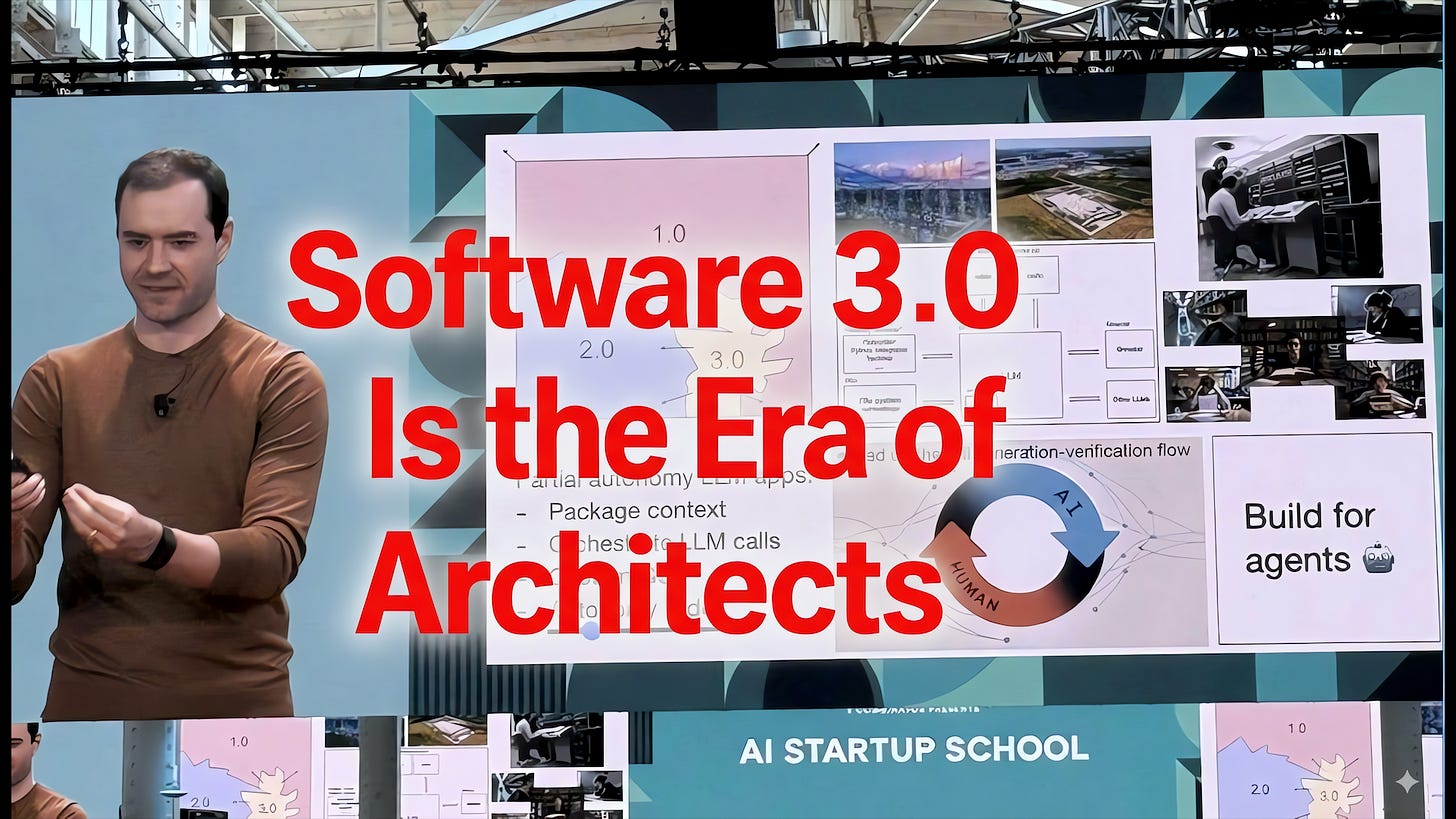In the early days of programming, you wrote every line yourself. Assembly. C. If something moved, you moved it. Software 1.0 was about mechanics: making machines do things, one instruction at a time.
Software 2.0 changed the game. We got layers. Frameworks. Abstractions. Now you could build things faster and safer. You didn’t need to reinvent sorting algorithms or handle memory yourself. But the job was still about writing code.
Software 3.0 is different. It’s not just code you write. It’s systems you assemble.
A few people saw it early, probably the same kind of people who preferred MPCs to original instruments and sounds, or Lego Technic to regular Lego. You stop thinking in terms of code and start thinking in terms of components, APIs, pipelines, microservices, agents, LLMs, and embeddings. Code becomes your sample library.
In Software 3.0, most of the "code" is already written. It lives in open-source packages, cloud APIs, foundation models, MCP (Model Context Protocol) tool calls, vector databases, and prebuilt agents. The new bottleneck isn’t implementation. It’s curation.
Which means the new leverage point is orchestration.
The best developers in this era aren’t just great coders. They’re producers in the hip-hop sense, digging through the crates of open-source, chopping up APIs, layering services, and producing new compositions out of the vast archive of digital tools.
They understand how things fit. How to decompose a problem, assign the right modules, and stitch together something powerful, expressive, and unique. They make meaning from abundance.
If Software 2.0 was about engineers, Software 3.0 is about curators.
These architects have a strange skill set. They know where to find the good stuff. They can sketch an AI-native product on a whiteboard and know which parts to sample, which parts to write, and which parts to leave out entirely. They understand latency, cost, scalability, but also rhythm, vibe, and flow. They can see tradeoffs and make them sing.
If you’re learning to build in this new world, here’s a shortcut: stop obsessing over syntax and start developing taste. Learn the workflows. The primitives. The raw materials. Learn how to build with AI, not just for it.
Because increasingly, the job isn’t to be the machine. It’s to play the machine like an instrument.
And that makes you the producer. The architect.


